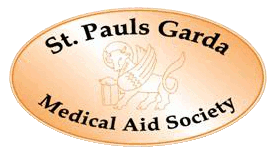 Download this information as a PDF
Download this information as a PDF
What is pityriasis versicolor?
Pityriasis versicolor is a common skin complaint in which flaky discoloured patches appear mainly on the chest and back. The term ‘pityriasis’ is used to describe skin conditions in which the scale appears similar to bran. The multiple colours arising in the disorder give rise to the second part of the name, ‘versicolor’. It sometimes called ‘tinea versicolor’, although the term ‘tinea’ should strictly refer to infection with a dermatophyte fungus.
Clinical features
Pityriasis versicolor affects the trunk, neck, and/or arms, and is uncommon on other parts of the body. The patches may be pink, coppery brown or paler than surrounding skin. They may be mildly itchy. Pale patches may be more common in darker skin; this appearance is known as pityriasis versicolor alba and is less likely to itch. Sometimes the patches start scaly and brown, and then resolve through a non-scaly and white stage.
A yellow-green fluorescence may be observed on examination of affected areas with a Wood's light (long wave ultraviolet A).
Pityriasis versicolor is more common in hot, humid climates or in those who sweat heavily, so it may recur each summer. Pityriasis versicolor does not appear to predispose affected areas to sunburn even when it causes pale white marks.
What is the cause of pityriasis versicolor?
Pityriasis versicolor is caused by yeasts of the genus Malassezia, which may also be found on normal skin.
Usually Malassezia species grow sparsely in the seborrhoeic areas (scalp, face and chest) without causing a rash. In some individuals they grow more actively on the skin surface, for unknown reasons. It is easier to demonstrate the yeasts in scrapings taken from the brown type of pityriasis versicolor than from the white type.
Microscopy is reported as positive if hyphae and yeast cells are seen; they resemble ‘spaghetti and meatballs’. However, culture is often negative because it is quite difficult to persuade the yeasts to grow in a laboratory. It is only recently that nine different species of Malassezia have been identified. The most common species of yeast cultured from pityriasis versicolor patches are M globosa and M sympodialis.
The pale type of pityriasis versicolor is thought to be due to a chemical produced by Malassezia that diffuses down and impairs the function of the pigment cells in the underlying skin.
Treatment
Topical and oral antifungal agents are used to treat active pityriasis versicolor. These may include:
- Propylene glycol
- Sodium thiosulphate solution
- Selenium sulfide
- Topical azoles including clotrimazole, miconazole, econazole and ketoconazole (Nizoral ) in various formulations ( eg : Nizoral Shampoo used as a lotion )
- Terbinafine gel
- Ciclopirox cream/solution
Apply the medicine widely from neck to upper thighs and down to you wrists front + back for 20 minutes nightly for as long as directed (usually about one weeks).
Patients with extensive or persistent pityriasis versicolor may be prescribed ketoconazole tablets or itraconazole capsules for a few days. As few as two tablets will clear many cases for several months. Vigorous exercise an hour later may help the medication to work as it comes out in the sweat. Do not shower for a few hours. It will take a few weeks after finishing the treatment before the rash clears.
Recurrences
Pink or brown types of pityriasis versicolor generally clear satisfactorily with treatment but the rash often recurs when conditions are right for the Malassezia to proliferate. The antifungal treatment should be repeated when the scaly component of pityriasis versicolor recurs. Some people have to treat themselves every spring.
Oral antifungal treatment may be prescribed for one to three days each month as a preventative in those who have frequent recurrences.
The pale type of pityriasis versicolor also generally clears up with treatment and the skin eventually tans normally with sun exposure. However, occasionally white marks are permanent for unknown reasons, persisting long after the scaling and yeasts have gone and despite exposure to the sun. In such cases antifungal treatment may be unhelpful.














